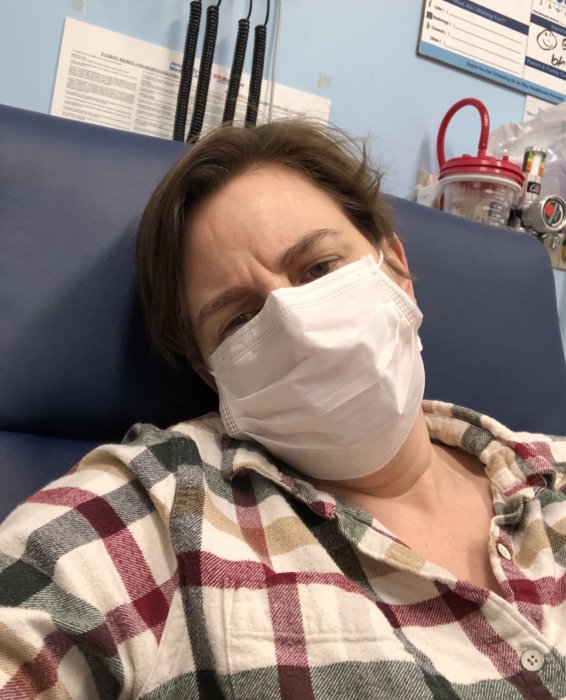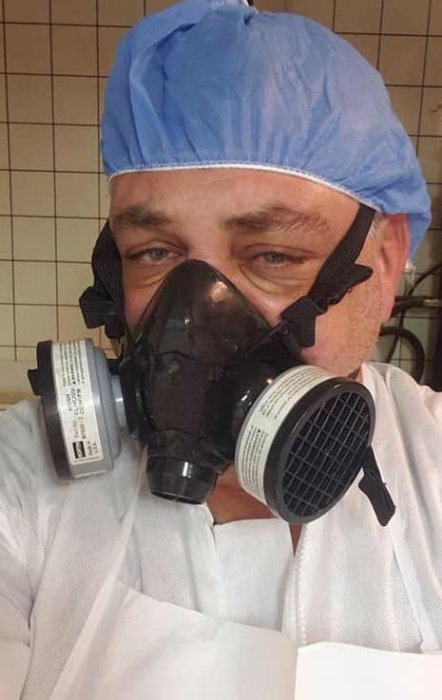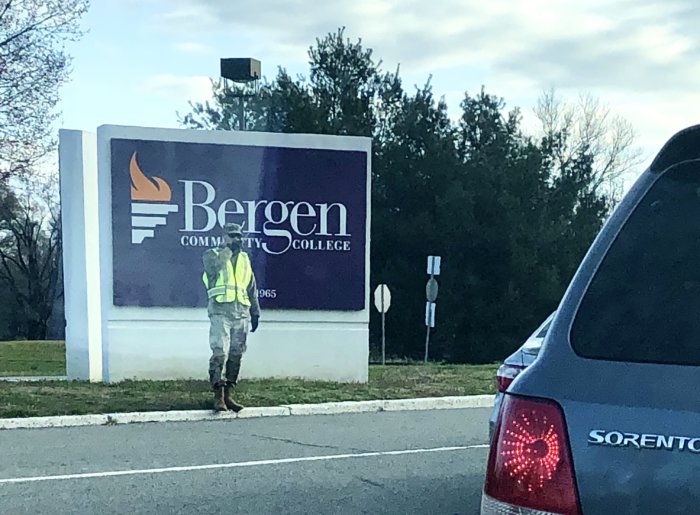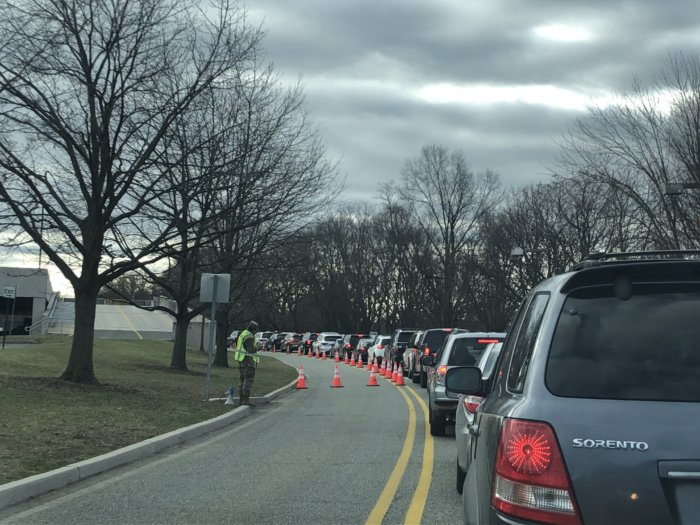Quarantined Voices
On the Transformative Impact of COVID Narratives at a Time of Crisis
1_The Story of a Year
As I sit at my desk in the winter of 2021 in my home in New Jersey, USA, thinking of the story of COVID, and, also of my story of COVID, that has emerged over the past year, I struggle to find a starting point. There are many places I might begin. But this story has never been told before and its ending has not yet occurred. The uncertainty of the unfolding story throws the entire story into flux. Every day we hear new information, as well as heart-wrenching stories of illness and loss in the United States set into fatal motion in the final year of the presidency of Donald Trump. But that is not my only obstacle. I am writing with long-haul COVID, and this intellectual project is mentally taxing in a way I did not anticipate so far into my illness. As we embark on an exploration of COVID narratives, of the shapes they are taking, and of the impacts they have already had, my struggle to begin is both relevant and ironic. Indeed, we are deep in uncharted waters that have called for innovative collaborative narrative forms emerging within the uniquely limiting contexts of the global pandemic.
Let’s begin here, a year after the first documented cases of COVID-19 hit the United States. Media outlets have recently reported on the experience long haulers have lived for months — that COVID patients in the grips of relentless illness have found one another online, sharing their despair and their stories with each other. In her piece for The Washington Post, Kelsey Ables delves into the isolation of COVID patients: “They face doctors who don’t believe them; media that often ignore them; friends and family who don’t understand why they aren’t better; and a virus that, with each passing month, pushes them deeper into the unknown.” As Melanie Montano, administrator for the well-known COVID-19 group on Slack, puts it, “We’re not dead but we’re not living.” [1] Dozens of social media groups for COVID patients have formed; many offer general support while others are for more specialized groups, such as parents of children with long COVID or those suffering from brain fog. Such forums offer places where patients are seen and heard. Many people write posts that begin with statements such as, I am new here. This is my story. Others write in desperation, looking for solidarity: Yet another doctor said it’s all in my head! He refused to help me. Yet others are trying to get a handle on what is and is not COVID related: My ears will not stop ringing. Am I the only one?
These posts, overwhelming en masse, provide a fragmented and overlapping narrative that the general public is not privy to, of a pernicious virus that will not quit. Indeed, some long haulers are reluctant to share their stories outside of COVID forums because their friends, families, and colleagues hardly believe they are still, or ever were, sick. Yet with at least 35% of those infected by COVID still symptomatic two to three weeks after testing and many sick for months, there are already millions of long haulers, and the stories we share will shape public health, and the role of narrative medicine, for years to come. [2] We have already been making an impact.
In a January 2021 article, Amy Dockser Marcus of The Wall Street Journal, reports on two online groups that formed in spring 2020, The Patient-Led Research for COVID-19 group on Slack (part of the Body Politic channel) and Survivor Corps on Facebook, that quickly expanded beyond the traditional scope of support groups to conduct what is called citizen research. [3] The Patient-Led Research group published the findings of its first patient survey of 640 people with COVID, “What Does COVID-19 Recovery Actually Look Like?” in May 2020, shedding light on the length of illness, range of symptoms, and large number of symptomatic people who unable to secure timely COVID testing. [4] Two months later, Survivor Corps published “COVID-19 ‘Long-Hauler’ Symptoms Survey Report,” giving statistical credence to the fact and prevalence of long COVID. [5] In December 2020, the Body Politic group published their second, more comprehensive report on long COVID, this time based on a survey of nearly 4,000 patients world-wide, showing “prevalence of 205 symptoms in 10 organ systems […] traced over seven months.” [6] These reports, sparked by stories of relentless illness posted on social media, provide statistical validity to the upheaval and uncertainty that patients globally are facing in their isolated silos. Further, they reveal an important counter-narrative to the official reports of the United States in the first year of the pandemic, which downplayed the severity and longevity of SARS CoV-2 so thoroughly as to render long haulers invisible.
2_Back to the Beginning
Given the interference of long COVID on my story, let’s step back in time into the personal. Early in March 2020, amid growing concerns about the spread of the novel coronavirus, I traveled from my home in New Jersey to Boston with my fiancé Konstantin for a final weekend getaway wrapped into a successful work trip. When Konstantin left for work the morning after our return, I could not have known how profoundly the world would change before we would reunite in early June.
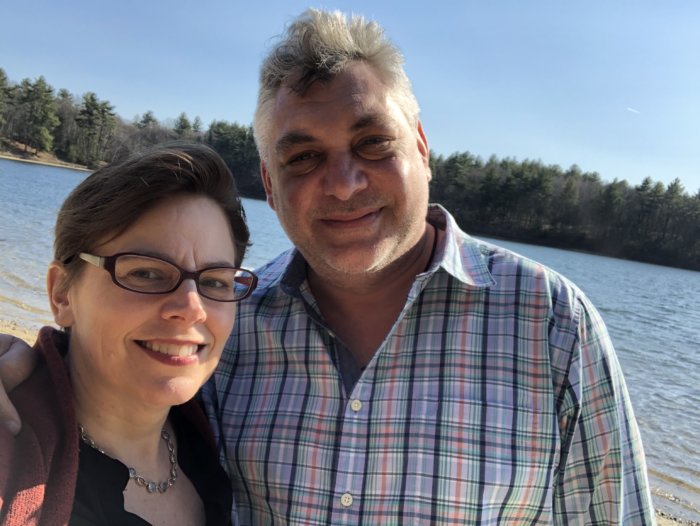
For our lives immediately took two very different paths. As a funeral director, Konstantin was plunged into the horrifying deluge of funerals in the New York metropolitan area. The deaths were unrelenting, the calls came round the clock, and the loss of life was greater than anyone — hospital morgues, funeral homes, public medical examiners, or cemeteries — could handle.
My experience after our return was different but equally harrowing: when I picked up my daughters from their father’s home, my 16-year-old Molly was sick with a dry hacking cough and low-grade fever. By the next week, I had developed chest pain and difficulty breathing. A week after that, I was in the emergency room twice, sent home each time because the hospitals were full. Although I was dangerously hypoxic with a severe case of COVID-19, others were more acutely ill.
|
|
|
3_Making our Journey Public
My obvious immediate fear, seeing how weak and sick Molly was, was that she had contracted the SARS CoV-2 virus. Yet as I searched for clarity on her illness, I ran into roadblocks. Counter to the official White House statement issued on March 9, the day after her cough began, that one million tests would be administered that week, and four million in subsequent weeks, COVID-19 tests were scarce. We know now that, contrary to the government’s official statement, only 4,000 tests were given nationwide that week, a scarcity I experienced firsthand as I tried in vain to get my daughter tested. [7] Yet much of the country trusted the claim of Donald Trump’s White House and believed that if no one had tested positive in cities such as mine, that the virus was not here. The truth was quite different. After all, the surge in funerals that Konstantin was handling was not a coincidence.
As concerning as Molly’s illness was, she did not qualify for a COVID test: she had only two of the three required symptoms (cough and fever, but no shortness of breath), and had not recently been overseas or had known contact with someone who had tested positive for the virus. These were the criteria, even as the March 6, 2020 Mortality and Morbidity Weekly Report published on the CDC website noted that only two people in the United States had become infected from contact with someone who had gotten sick overseas, and further stated that “Since February 28, an increasing number of newly diagnosed confirmed and presumptive COVID-19 cases have been in patients with neither a relevant travel history nor clear epidemiologic links to other confirmed COVID-19 patients.” [8] I felt an urgency to draw attention to the problem: how could we contain the spread of the virus if symptomatic people were not eligible for tests?
Dismayed by the limited and conflicting public information about COVID-19 in the U.S., I wrote a personal essay for The Huffington Post, published on March 15, about my inability to get Molly tested. Bypassing local political leaders and testing sites that were hamstrung by the leadership in Washington, I needed to communicate directly with the public about the Kafkaesque maze of information I had encountered:
[W]hat I see is that we are often very bad at thinking about the big picture. The big picture is messy and complicated. It’s easy for a political figure, or even a nurse fielding calls on a hotline, to tell people to get tested for COVID-19 and to direct them to their doctors or to the emergency room. But the doctors don’t have tests, and in the emergency room, the sick will be exposed to other sick people and will add their own germs to the mix, only to be sent home because hospitals cannot meet the demand.
Some people might currently be proud of the relatively low — but rising — number of cases in this country without asking if we have all of the information we need. But that pride is foolish. [9]
I wrote to correct the narrative, to warn the public that sick people, including minors, could not get tested and that the information we had received about the pandemic response was unreliable. Doctors, such as Molly’s pediatrician, were already butting up against this reality and were placing calls to their local Health Departments. I knew that the voice of a worried parent might carry weight.
It was a bold move to write about my child, who may have been the first person in our city with COVID-19, an isolating virus that carried stigma and fear. But we were in a public health crisis, and I did not want others to rely on false notions that they were safe from COVID-19 or could easily get tested. I asked Molly’s permission, understanding the impact a national publication might have on her, and sent our story to Huffington Post.
I was not much older than Molly in 1992 when I was diagnosed with ovarian cancer. Facing cancer so young was a formative experience, and illness has shaped my narrative sense of self ever since. Yet at age 22, though I did not hide the fact of my cancer, I was too sick and lacked the public voice to address the fear or shame my disease inspired. Instead, I looked for the stories about ovarian cancer and found distressingly few. [10] I searched for women who had written about other cancers — women like Audre Lorde, who in the late 1970s refused to let the stigma of breast cancer silence her, and Susan Sontag, who broke down the meanings we assign to cancer. [11] Lorde had spent years building her voice, so when she fell ill, she had her pen ready — yet even so, in a pre-digital age, she didn’t compile and make public The Cancer Journals until two years later. And Sontag didn’t disclose her breast cancer until long after publication of her groundbreaking work Illness as Metaphor. For myself, it was a second diagnosis, of multiple sclerosis at age 39, that gave me the impetus, fueled by those before me, to write about my diseases. Thus, when COVID entered my life, I knew exactly what to do: I needed to tell the story.
The public response to my HuffPost piece indicated a profound hunger for information and guidance about COVID. Everybody was afraid, and on-the-ground information helped assuage fear. So I continued posting on Facebook, as dispatches from within our quarantined home. Molly’s health improved and then declined again, in what we now understand as the waves of a COVID illness. A week later when we were both sick, I wrote a long entry about our renewed quest to get tested, with a predawn start to get in line at a new drive-through testing site thirty miles away (accessible, it is worth noting, only to those with cars and those well enough to drive). We were turned away at 9:30am within sight of the testing tents; they had run out of tests. After a desperate consult with my nurse practitioner who wanted someone to listen to our lungs, we drove to urgent care. Though it was not a testing site, the doctor there was allotted three tests per day for high-risk patients. She used two of those tests on Molly and me. In a lengthy post on Facebook the next day, I included this assessment:
We left home yesterday morning in our quest to be tested at a little after 5am, and we returned at 1:30pm, 8.5 hours later. This ordeal is not for the faint of heart, or for the very sick. And we were lucky to get tested. The more likely outcome, if not for my MS, would have been that we went home without it. The doctor even said that she might not have tested Molly if not for the importance of knowing if she has COVID-19, given my risk level. [12]
|
|
|
Five days later, my test came back positive. Molly’s, however, was negative, which was suspect given the timeline of our illnesses. I began researching false negative results, planning another article. At a time when infectious disease experts believed children were protected against COVID, I wanted Molly’s infection be “counted,” a possibility closed off by her negative test result. Further, though ample evidence now exists about the ideal testing window — which, at symptomatic day 5, I was within, and Molly at day 15 was not — at the time such information did not exist. But my health soon nosedived. I could not write a research-based piece for publication; I was too sick.
I could, however, continue my weekly Facebook dispatches and follow COVID research and patient stories while sick on my couch. Several people contacted me privately. Two women shared what they had not made public — that they had had presumed cases of COVID, with weeks-long recoveries. Others revealed they were symptomatic but afraid to get tested or tell their loved ones. I understood their hesitance, yet urged them to lean on their loved ones, as we were in a burgeoning public health crisis that by necessity forced people into isolation. We needed one another. Even more, we needed real stories so both doctors and laypeople would know the scope and details of the crisis.
4_Losing the Narrative
As Molly recovered from a bout of vomiting, acute COVID’s final blow, [13] my health deteriorated. On the morning of March 28, my 50th birthday, I set one goal for myself: to stay out of the hospital that day. Yet by midday, my oxygen levels were unstable and I struggled to remain conscious. My nurse practitioner instructed me to get to the ER as soon as possible. I was monitored there for several hours then sent home on bedrest, which is where I stayed for nearly two months. In that time, I lived in a near silent and still haze, with chest pain and shortness of breath, brain fog and exhaustion, and oxygen levels that dropped with any exertion, including standing and speaking. I kept my oximeter with me at all times, and my hospital bag sat ready by the door, just in case.
My writing goals shifted; I was no longer able to compose narrative essays, but I felt a continued urgency to create a written record of my illness though. So I tried a genre well suited for fragmentation, brevity, and disorder: poetry. I committed to writing a poem every day through the worst of my illness, from April into early May, and sporadically after that, leaving me with dozens of poems that provide a devastating and visceral account of a month of insomnia, fog, pain, and the fight for air.
Days of Fog and Pressure
My daughter laughs
at my muddled questions asked
on repeat I forget not just
the answer but that I have already
inquired about schoolwork, dinner,
weather, what else I cannot remember
if I have been talking to her
or to myself.I fight to break this neural haze
thick, so thick,
in the pulsing darkness,
noisy and closing in, always in,
on the center of clarity, growing small
and smaller
week upon week.
I close my eyes in exhaustion
against the drumming inside my head.My brain swoons and constricts,
and I feel myself diminish
as my blood runs low
on oxygen, I fight not just for air,
but for words, logic,
for narrative.I fight to remember the story
of me. [14]
Arthur Frank writes in The Wounded Storyteller of the chaos narrative as a record of life “reduced to a series of present-tense assaults. If a narrative involves temporal progressions, chaos is anti-narrative.” [15] He argues that “The body-self that is immersed in chaos lives only in immediacy” with a story that lacks time and order. The world depicted in my COVID poems is built of recurring images and fears, in which order, whether temporal or syntactical, disintegrates into the stuttering rhythms of my breath. Yet, what emerges, when the poems are taken together, is a fragmented narrative of life on the brink, of a self struggling to find “the story of me.” Angela Woods argues in her essay “The Limits of Narrative” that metaphor, fragments, and phenomenology are “useful ‘ways in’ to the meanings of experience generally and of illness specifically; avenues of expression which might well intersect with or contribute to narrative but do not take storytelling as starting-point or telos.” [16] My poems tap into long moments not cohesive narratives, and they assuredly do not contain the outward-facing potential for restitution or hope of my Facebook posts.
The immediate audience here, as I was writing, was myself, so the rhetorical aim sits in contrast to my other work, in which I pushed myself beyond my physical limits in order to inform the public about my COVID journey, yet to do so without inducing panic. The painful interior images found in my poems came to me easily, without the demanding mental focus required for my weekly Facebook posts. Yet it is through the poems, which Frank would describe as anti-narrative, that readers can feel my struggle to hold onto myself.
I have considered why I devoted precious energy to poetry, a seeming luxury, in those foggy weeks. I once remarked to a friend that decades ago, the pain of cancer was bearable once I found a way to think of it as interesting; it was tolerable in the moments when I was able to step outside of the pain momentarily, to observe it, marvel at it, be free of it. Writing poetry through COVID offered the same grace. At the end of each day, before succumbing to another fitful night, I reflected on whatever thought or fear had consumed me. As I wrote, it was I, not the pain or the breathlessness or the fatigue, who was in control of my story. So, while much of my work is done in service of others, composing poetry helped me maintain a vital sense of self even as my life was reduced to the rhythms of COVID.
Relentless
I plumb the depths
of all we do not know
with unspeakable terror,
find a new path
toward viral mass destruction
every night as I sleep.Each dream
is filled with possibility —
of a cure, of safety —
dashed, dashed,
and dashed again.
My heart beats
me awake,
and I listen
to remember
where I am.
And each night
the dry, relentless cough
of my daughter
reminds me
that we are
not yet destroyed. [17]
5_Entering Uncharted Territory
When I first fell ill, my doctor had warned that recovery might take a month, longer than for most, given my multiple sclerosis. But when weeks five and six came and went, and I was still on my couch, something felt very wrong. At this point, she examined me in person and was able to secure supplemental oxygen for home use around the clock. Then a friend, a doctor working the COVID floors at a hospital in New York, saw one of my Facebook posts became worried as well; she came to my house to examine me. These two doctors, who had been residents together years before, shared notes about my care, and arranged for tests and referrals. I was sent to a pulmonologist who told me that I was among “the walking wounded,” a newly identified group of patients who do not die from COVID but who face long-term and as-yet-unknown symptoms.
In early May, in a blog post, Dr. Paul Garner, an infectious disease specialist in Liverpool, provided further validation that what I was puzzling through with my doctors was impacting others:
For almost seven weeks I have been through a roller coaster of ill health, extreme emotions, and utter exhaustion…The illness ebbs and flows, but never goes away. Health professionals, employers, partners, and people with the disease need to know that this illness can last for weeks. [18]
Garner, who had also fallen ill mid-March, mentions the COVID-19 Support Group on Facebook was “full of people with these stories.” [19] There was a community, and Garner, as one among many, was making their story (our story) public. He gained international attention as a doctor, but the collective voice of COVID patients was gaining momentum of its own, as we were beginning to push through our fatigue to demand help. As I entered this no man’s land of long COVID, I felt almost exhilarated by the collaborative focus of doctors and patients alike.
6_A Community Forms
In May, as I continued to write poetry and on social media — one form capturing the uncertainty and chaos, the other striving for resolution and answers — , I sought out online groups, knowing that patients’ lived experiences are vital to combatting COVID. When Body Politic published its first patient-led research report in May, most of the respondents had prolonged illnesses (at the time, of more than two weeks), half had never been tested for COVID-19, and another quarter had, like my daughter, tested negative, leading the researchers to declare: “Due to the severe lack of testing available in many areas and the prevalence of false negatives, we do not believe people’s experiences with COVID-19 symptoms should be discounted because they did not receive a positive test result.” [20] To this day, patient groups continue to fight for the health and rights of those who, absent a verified antigen or antibody test, cannot prove they were ever infected.
The informational void surrounding COVID, especially long COVID, was being filled by those who were sick, driven by their urgent need to be taken seriously as the list of symptoms grew and grew, from headaches and COVID toes, to nausea and tingling extremities, and more. Survivor Corps’ fall 2020 survey, which identified an expansive list of multi-system symptoms, provides vital data for patients and medical professionals alike on the long and curious reach of this disease, which is still often identified as only a respiratory virus. I have experienced more than 90 COVID symptoms, impacting seven different systems; if not for online groups and patient-led research, I would have limited understanding of what is happening. Comprehensive understanding of COVID’s multi-system impacts is vital to patient care, including the development of treatments, creation of post-COVID clinics, designation of new insurance diagnostic codes, and more.
This all-hands-on-deck collaboration allows trained medical professionals to follow up on the observations of the COVID community with IRB-approved research studies. Indeed, my COVID rehabilitation specialist, Dr. Noah Greenspan transformed his practice based on the stories he heard from patients like myself, offering weekly online support groups, webinars, and a recovery bootcamp since spring 2020. In January 2021 Greenspan took his collaborative approach further, partnering with longhauler Dr. Julie Walsh-Messinger on a study of his oxygen-based long COVID rehabilitation program. [21]
7_Rethinking the Illness Narrative
One hundred days into my COVID journey, I wrote a second essay for HuffPost on the continued misconceptions about the long course of the disease. [22] My story, published in June 2020, contradicted the prevailing narrative so fully that it attracted international attention, and I was interviewed by media outlets ranging from Good Morning, America to Fox Radio News Rundown. [23] Audiences were shocked to learn that many of us were sick for months, with no end in sight, and this signaled to me that the public-facing work of long haulers was just beginning. We embody the chaos of the virus, complicating the narrative people want to believe. And though we had virtually ventured out of our sickbed silos into safe online communities, we had not yet reached the general public. As challenging as it was given the debilitating nature of our illnesses, that summer an increasing number of long haulers turned our focus outward, coordinating and motivating one another in Facebook groups like Long Haul COVID-19 Fighters.
In winter 2021, the first anniversary of the pandemic in the United States, poignantly memorialized by President Biden, was accompanied by a burst of stories in the media, including my own anniversary essay in The Huffington Post, about long COVID patients who had been sick a full year. [24] The belated attention, however, reveals something deeper than a media problem or even a politic problem; it reflects a deep public desire for a tidy ending in the face of an uncontained pandemic. We want to trust that survivors get better, and that they do so in a timely manner. Yet that is not the reality. The reality is that we do not yet know the ending of this story. It has not been written yet, so we are writing it as we go. It is a new kind of narrative, both fractured and overflowing, told online and on repeat but with variations, the words laid out in gasping syntax and awkward metaphors, in whatever fits and starts we each can manage. But as we speak, our narratives are not chaotic; indeed, they are marked by an abundance — of days, of suffering, of symptoms, of voices, of life — that is gaining power and volume as individual stories sit one, next to the other, to the other. I do not yet know what shape this emergent story will take, but I am eager to be part of writing it.
_How to Cite
Ann E. Wallace. “Quarantined Voices: On the Transformative Impact of COVID Narratives at a Time of Crisis.” On_Culture: The Open Journal for the Study of Culture 11 (2021). <http://geb.uni-giessen.de/geb/volltexte/2021/16177/>.

_Endnotes
- [1] Kelsey Ables, “Covid ‘Long Haulers’ Have Nowhere Else to Turn — So They’re Finding Each Other Online,” in The Washington Post, October 1, 2020, accessed February 4, 2021, <https://www.washingtonpost.com/technology/2020/10/01/long-haulers-covid-facebook-support-group/>.
- [2] “What We Know about Long-Term Effects of COVID-19,” World Health Organization, September 11, 2020, accessed February 6, 2021, <https://www.who.int/docs/default-source/coronaviruse/risk-comms-updates/update-36-long-term-symptoms.pdf?sfvrsn=5d3789a6_2>.
- [3] Amy Docker Marcus, “COVID-19 Patients Are Doing Their Own Research,” in The Wall Street Journal, January 30, 2021, accessed February 4, 2021, <https://www.wsj.com/articles/covid-19-patients-are-doing-their-own-research-11611982860?fbclid=IwAR0lkPgea7Fgn_xnqWa-P6IxB54k_oaFf3FbMghoKoxGg07fgYLGfMLf8jU>.
- [4] Natalie J. Lambert, “COVID-19 ‘Long-Hauler’ Symptoms Survey Report,” Survivor Corps, July 25, 2020, accessed January 31, 2021, <https://www.survivorcorps.com>.
- [5] Gina Assaf et al., “What Does COVID-19 Recovery Actually Look Like?,” May 11, 2020, accessed February 2, 2021, <https://patientresearchcovid19.com/research/report-1/>.
- [6] Hannah Davis et al, “Characterizing Long COVID in an International Cohort: Seven Months of Symptoms and Their Impact,” December 24, 2020, accessed January 5, 2021, <https://www.medrxiv.org/content/10.1101/2020.12.24.20248802v2>.
- [7] “Timeline of Trump’s Coronavirus Responses,” Congressman Lloyd Doggett, January 21, 2021, accessed January 31, 2021, <https://doggett.house.gov/media-center/blog-posts/timeline-trump-s-coronavirus-responses>.
- [8] “Active Monitoring of Persons Exposed to Patients with Confirmed COVID-19 — United States, January–February 2020,” Morbidity and Mortality Weekly Report, CDC, March 6, 2021, accessed February 2, 2021, <https://www.cdc.gov/mmwr/volumes/69/wr/mm6909e1.htm?s_cid=mm6909e1_w>.
- [9] Ann E. Wallace, “My Teen Daughter Is Sick But Cannot Get the Coronavirus Test. That’s Simply Not Okay,” in Huffington Post, March 15, 2020, accessed January 31, 2021, <https://www.huffpost.com/entry/coronavirus-test-parenting_n_5e6e4694c5b6bd8156f95667>.
- [10] See Gilda Radner’s It’s Always Something (New York: Simon and Schuster, 1989). Other books, published later, include Ruth Picardie’s Before I Say Goodbye (London: Penguin, 1998), Margaret Edson’s Pulitzer Prize winning play Wit (New York: Faber & Faber, 1999), and Susan Gubar’s Memoir of a Debulked Woman (New York: W.W. Norton, 2012).
- [11] Audre Lorde, The Cancer Journals (San Francisco: Aunt Lute Books, 1980); Susan Sontag, Illness as Metaphor; and, AIDS and Its Metaphors (New York: Anchor, 1990).
- [12] Ann E. Wallace, March 23, 2020 post, Facebook, March 23, 2020, accessed March 01, 2021, <https://www.facebook.com/ann.wallace1/posts/10158133920312418>.
- [13] Molly had a few mild symptoms that persisted for months, and she unexpectedly relapsed with new long COVID symptoms in late summer 2020 and again in spring 2021 after receiving the COVID vaccine, thus further disrupting the linear COVID narrative.
- [14] Ann E. Wallace, “Days of Fog and Pressure,” in Coffin Bell: A Journal of Dark Literature 4.1 (2021), accessed January 2, 2021, <https://coffinbell.com/days-of-fog-and-pressure/>.
- [15] Arthur W. Frank, The Wounded Storyteller (Chicago: University of Chicago Press, 2013), xv.
- [16] Angela Woods, “The Limits of Narrative: Provocations for the Medical Humanities,” in Medical Humanities 37.2 (2011), accessed January 25, 2021, <https://mh.bmj.com/content/37/2/73.full>.
- [17] Ann E. Wallace, “Relentless,” in Mocking Heart Review 6.1 (2021), accessed February 8, 2021 <https://mockingheartreview.com/volume-6-issue-1/poetry/ann-e-wallace/>.
- [18] Paul Garner, “For Seven Weeks I Have Been on a Roller Coast of Ill Health, Extreme Emotions, and Utter Exhaustion,” in The BMJ Opinion, May 5, 2020, accessed January 31, 2021, <https://blogs.bmj.com/bmj/2020/05/05/paul-garner-people-who-have-a-more-protracted-illness-need-help-to-understand-and-cope-with-the-constantly-shifting-bizarre-symptoms/>.
- [19] Garner, Seven Weeks.
- [20] Assaf, “COVID-19 Recovery.”
- [21] “New COVID-19 Longhauler Study,” Pulmonary Wellness Foundation, accessed February 9, 2021, <https://pulmonarywellness.org/research/>.
- [22] Ann E. Wallace, “I’ve Been Sick With COVID-19 for over Three Months. Here’s What You Should Know,” in Huffington Post, June 24, 2020, accessed January 31, 2021, <https://www.huffpost.com/entry/sick-coronavirus-symptoms-what-to-know_n_5ef0d697c5b68f12e4e526e1>.
- [23] “Family Members Put on Life Support after Contracting COVID-19,” Good Morning America, June 25, 2020, accessed February 7, 2021, <https://abcnews.go.com/GMA/News/video/family-members-put-life-support-contracting-covid-19-71470070>; “NJ Woman Calls 100-Day Coronavirus Battle a ‘Constant Terror,’ Urges Mask Wearing,” Fox News Rundown, July 7, 2020, accessed February 7, 2021, <https://www.foxnews.com/media/new-jersey-woman-coronavirus-100-days-covid-terror>; For additional press coverage and essays by author, go to https://AnnWallacePhD.com.
- [24] Ann E. Wallace, “I’ve Been Sick From COVID-19 for Almost a Year. Here’s What My Life Has Been Like,” in Huffington Post, March 8, 2021, accessed March 16, 2021, <https://www.huffpost.com/entry/covid-19-long-haul-pasc-one-year_n_6043950dc5b613cec15deb40>.



